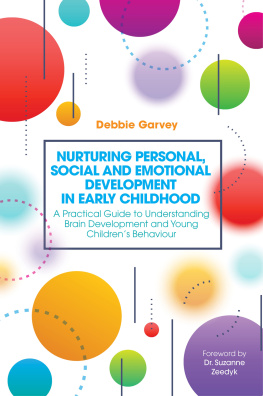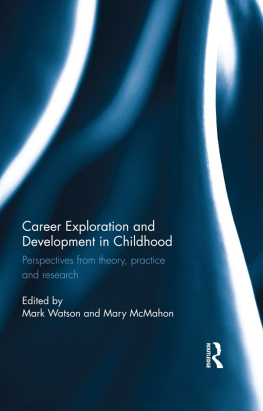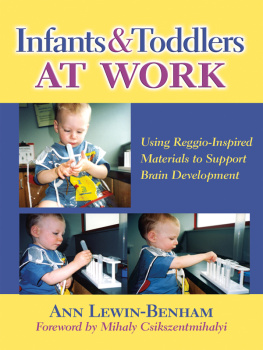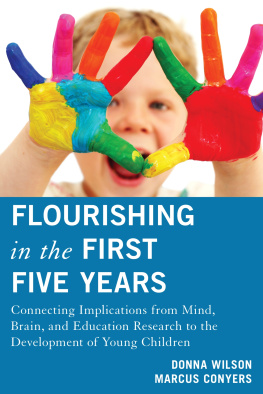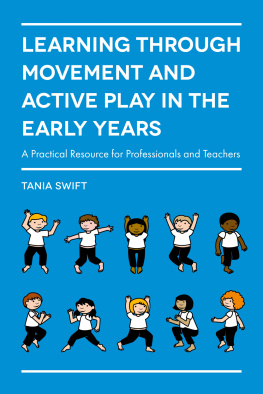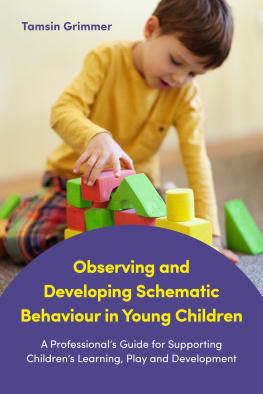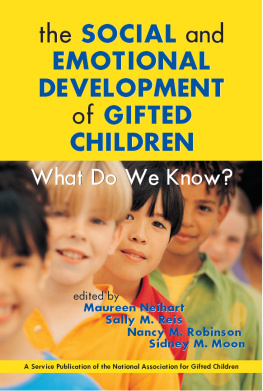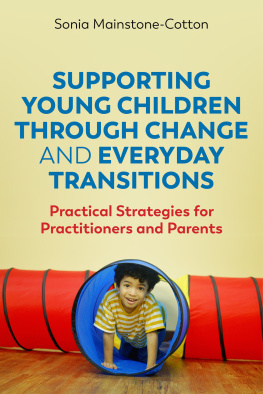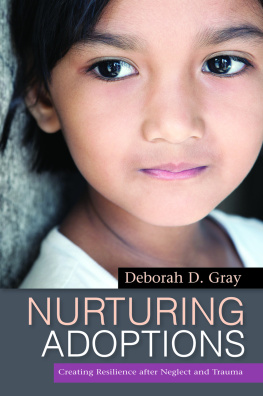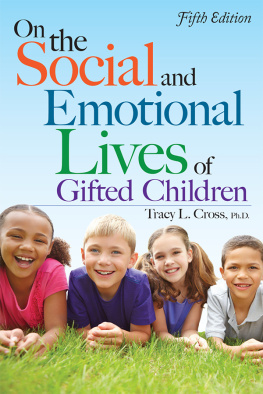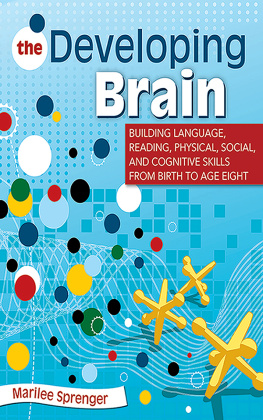
NURTURING PERSONAL,
SOCIAL AND EMOTIONAL
DEVELOPMENT
IN EARLY CHILDHOOD
A Practical Guide to Understanding
Brain Development and Young
Childrens Behaviour
Debbie Garvey
Foreword by Dr Suzanne Zeedyk

Jessica Kingsley Publishers
London and Philadelphia
Contents
Foreword
I have come to think of this as a book of stories. Debbie Garvey has taken the findings of science and turned them into stories. In undertaking this risk, she has taught me something important: we need more such stories.
We need them because stories are transformational. That is their purpose. Stories are not simply descriptive. They do not merely report an event, real or imagined. The function of stories, throughout the arc of human history, has been to craft a pathway to deeper truths, to richer meaning. And that is what Debbie Garvey offers us. She gives us stories that illuminate the insights at the heart of contemporary neuroscience.
Thats a big task for an author to set herself, given that even the word neuroscience feels scary to many people. Moreover, stepping into the neuroscience arena has become controversial, as some commentators are worried our increasing knowledge of the brain generates more anxiety than benefit. So, I am grateful an early years practitioner should have taken the plunge to explore new ways of helping the field move from theory to practice, from knowledge to understanding.
This is what the many stories in this book teach us: if we approach childrens behaviour, first and foremost, from a place of compassion, rather than knowledge, then we are best placed to make use of scientific discoveries. Listening to Debbie Garveys stories takes courage, though, because they not only enable us to see childrens behaviour anew, they force us to see ourselves anew. So, let me begin this foreword by celebrating not just the authors courage, but that of the readers. Its going to be a bit of a bumpy ride.
The discoveries made by neuroscientists are now regularly reported to the public, via the media and social media. Any internet search will easily yield basic developmental processes. Babies are born already able to communicate, and they engage socially with other people from the outset. Their brains are much more observant than our culture realises, and brains develop more rapidly within the first few years of life than they ever will again. The growth of synapses between neurons in the brain is driven largely by a childs experiences of their world, and the growth of those synapses happens at a rate faster than anything we can realistically imagine. The central nervous system of babies and toddlers remains immature, leaving them unable to self-regulate the physiological reactions they have to their environment. They need help and support and reassurance from others in order to cope well with daily life.
As relevant as these insights are for those who care for young children, it is striking how many obstacles remain to their being incorporated into adult behaviour. This is, in part, because not everyone has shared in this knowledge. Information on babies brain development is not yet standardly included within ante-natal classes for parents or childcare degrees for professionals. Even when the information is made available, it is not always easy to apply when your toddler is having a tantrum in the middle of the supermarket or biting another child in his play group or when you are the nursery manager devising a staff rota that truly facilitates continuous relationships with children. That, then, is precisely what Debbie Garvey sets out to do: help readers translate the neuroscience so it becomes useful when responding to the ordinary, daily behavioural challenges presented by young children. Why do they bite? What is an emotionally healthy drop-off policy? Why are some children so resistant to new foods? What do you do when a child refuses to be put down, but you have other children to attend to?
Perhaps we would expect a book with the words practical guide in the title to offer us answers to such problems. What we might not have expected is how Garveys stories lead us to question the unconscious assumptions about behaviour with which we started. Why are we so very bothered by childrens biting? What is it like for children to walk into an unfamiliar space? Where did the modern penchant for nursery graduation ceremonies come from, and does it serve children or adults? Why is our emphasis so often placed on childrens behaviour, rather than their feelings, even though we dont usually treat adults in this way? Why does it seem so hard to fully embrace the idea that young children are never naughty? Why havent I, as the reader, ever before asked myself some of these questions? Many seem obvious, now that they have been pointed out. Others are so surprising they feel provocative.
I have rarely seen a professional practice guide do what Debbie Garvey has done in this one. She gently but persistently turns the readers attention back on him or herself, insisting on self-reflection. This is where her skill as a storyteller comes to its fore. By beginning with stories of her own ordinary experience her broken foot, her emotions on entering unfamiliar buildings, her behaviour when tired and grumpy she invites the readers compassion for her struggles. Once she has called that forth, it feels a natural step to extend the compassion outward, to the children and parents she is describing on the page. The reader joins Garvey in wondering about childrens feelings when standing on a busy street, or when they are tired and grumpy and overwhelmed, or when they are rendered dependent on a stranger and feeling vulnerable. Debbies stories are transformational because they are based in compassion and curiosity.
In todays world, where childcare and parenting practice is increasingly informed by neuroscience, this storytelling approach becomes valuable for two key reasons. The first concerns shame and denial. Most of us feel ashamed when we realise, upon getting the relationship-based message at the heart of neuroscience, we have sometimes failed to consider childrens internal emotional experiences. Even more uncomfortable is the idea we might have caused children hurt or damage. Self-reflection of the type Debbie Garvey leads us to and that I believe the neuroscience itself leads us to inevitably causes us moments of shame. We do not usually intend to wound or undermine children, and it takes courage to face up to the realisation we have sometimes done just that. It is even harder to accept that our unintentional behaviour might have had lasting ramifications. Debbies gentle but relentless wondering enables us to step into courage. That step is essential, because if we cant come to terms with the idea we could do damage to another person (whether a child or adult), we are left only with the option of stepping into denial. We turn to denial to protect our sense of self as a good person.
Unfortunately, it is not only individuals who turn to denial to protect their sense of self. Whole professional sectors can slip into denial, as demonstrated in 1950s hospitals, when psychologist James Robertson had difficulty getting staff to recognise that their policy of separating parents from ill children was creating long-term psychological damage (Robertson and Robertson 1989). How will we respond when the science points to hazardous areas of policy today: touch, play, transitions? Denial may be helpful to grownups, but it is never helpful to children, who are dependent upon us for care. That is why, as I said at the outset, the early years field needs more stories that facilitate curiosity. Compassion overcomes shame and denial.
Next page
